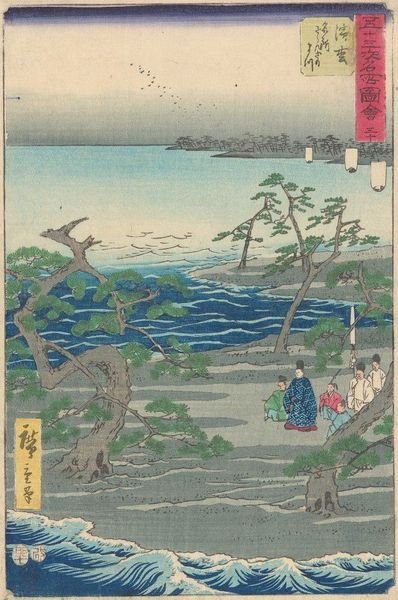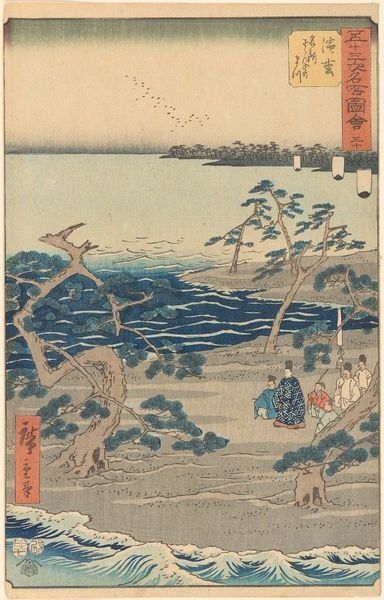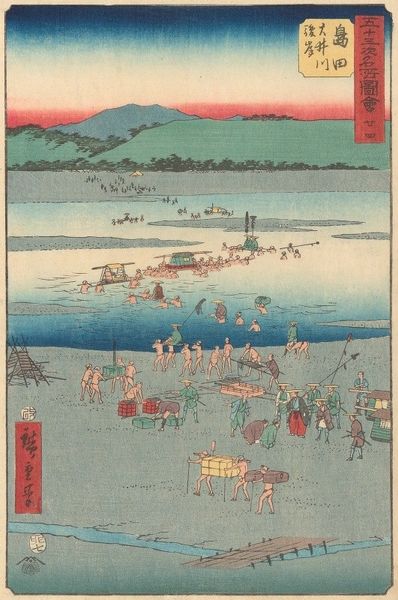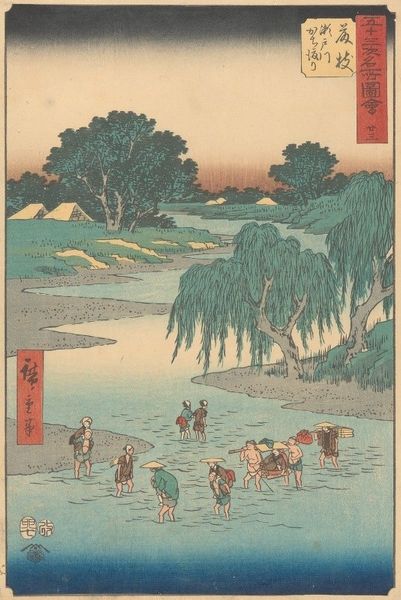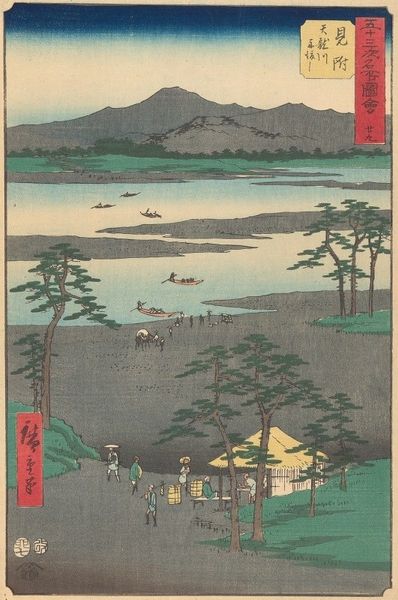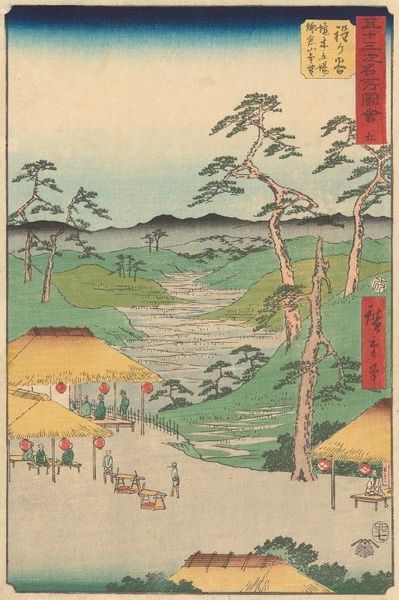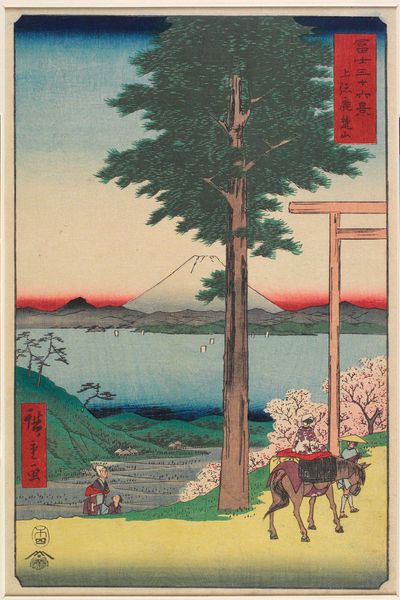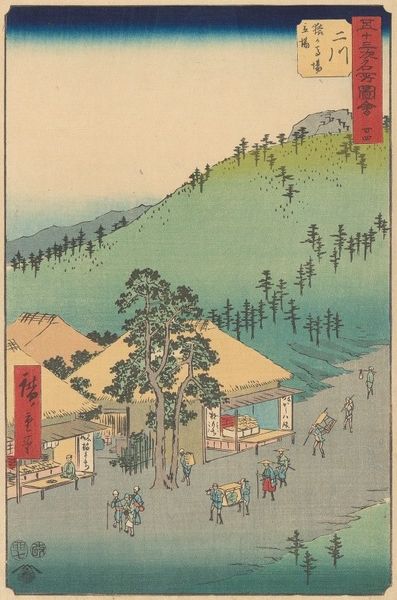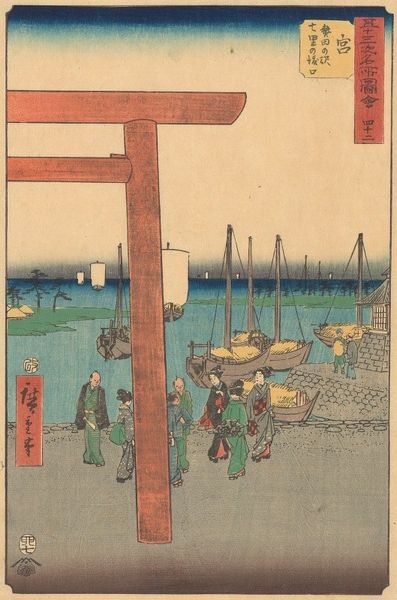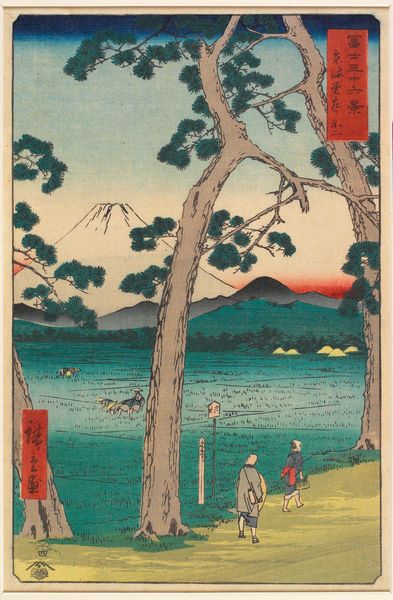
Copyright: Public Domain: Artvee
Curator: Immediately, I’m struck by the quiet determination in this scene. Editor: Well, let's delve in. This is "Shono" by Utagawa Hiroshige, created around 1855. It’s a woodblock print, part of the ukiyo-e tradition. We're looking at porters carrying goods through a landscape, right? Curator: Precisely. What stands out to me is the labor. The visible exertion on the figures hauling cargo really grounds the piece in a very physical reality, while the mistiness almost abstracts them away from it, as if these are phantoms caught in the act of working, a mirage of late Edo labor. Editor: I find the layering fascinating. Notice the composition. Hiroshige used various blocks of wood to imprint different layers of colors, achieving a soft, misty effect which softens the inherent starkness of a society built upon labor. What is its overall purpose? To beautify it or draw attention to it? Curator: Both. This intersectionality acknowledges, yet it simultaneously offers the viewer respite and a certain comfort in beauty. It depicts movement; a societal one perhaps as the artist highlights those moving the materials through landscapes. The landscape isn't a simple backdrop but another layer. The natural world framing labor highlights the context in which society grows. It’s a dance between hard work and natural beauty, isn’t it? Editor: In his choice of materials, one has to think about his audience. These woodblock prints would have circulated amongst merchants and consumers. Hiroshige is tapping into a consumer landscape with accessible production methods to comment upon society. These prints could bring scenes of the landscapes, thus creating beauty in commonplace labor. Curator: I'm captivated by the emotional depth, though. The somber palette and the bowing postures of figures suggest exhaustion, maybe an elegy for a disappearing way of life? Hiroshige acknowledges an empire built upon a foundation and cost. Editor: We get this duality—a glimpse into the means of producing this beautiful print through depictions of movement and landscapes. These artists become critical figures to interpreting the cultural landscape during this shift in the making.
Comments
No comments
Be the first to comment and join the conversation on the ultimate creative platform.
